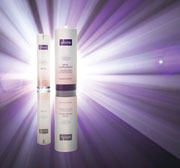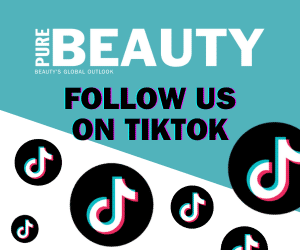One of the success stories of the past few years, nutricosmetics is carving out a niche in C&T but a lack of clarity around regulatory matters in some areas may hamper long-term growth, as Emma Reinhold reports
The nutricosmetics sector enjoys an enviable position in the beauty market. Its multi-channel appeal in both the skin and hair care markets, along with the nail care sector has enabled it to cater for a wide range of beauty requirements which only seem to be increasing.
Recent economic hardships have done little to dampen the industry’s appetite for the sector; market research company Kline says nutricosmetics is the fastest growing segment in the global skin care market with annual growth per year estimated at around 11% between 2008 and 2012. And according to Mintel, launch activity doubled from 2008 to 2009 with over 300 new products launched last year.
Kline valued the market at $1.5bn in 2007 and expects it to grow to $2.5bn by 2012. Individual markets vary due to different cultures, legislation and consumer requirements. Asia and Europe lead the market representing 41% and 55% of sales respectively, while the US is yet to embrace the trend mainstream, accounting for just 3% of the market.
“Even if the nutricosmetics market is small in comparison to other personal care markets, it shouldn’t take too long for it to outgrow the ultra niche market,” explains Caroline Negre, brand and marketing manager, Rousselot. “The increasing awareness of links between what we eat and our health and physical appearance means that the concept of nutricosmetics or beauty foods offers attractive opportunities to food and supplement producers as well.”
“Cosmetics companies are definitely interested in enriching their range with this new concept but nutricosmetics also attract some new players coming from food or nutraceutics to approach cosmetics markets,” adds Eric Moussu, director of sales & marketing, DRT, whose company manufactures nutritional supplements derived from pink bark and grape seed which are claimed to fight against free radicals.
According to Mintel’s Nica Lewis, Asia has the highest number of new products in the functional beauty benefits area where drinks, yoghurt and soup are the primary categories. In Europe however drinks categories such as tea and drinkable yoghurt, as well as fruit snacks are seeing the most launches. While in North America the emphasis in on drinks and chocolates with beauty benefits.
The relatively niche way nutricosmetics, and in particular functional beauty foods, are retailed in Europe and the US may slow future development unless a broader reaching retail initiative is adopted.
“Functional foods with beauty benefits are currently sold with success in supermarkets in Japan, where customers are fully aware of the beneficial effects,” continues Negre. “The European population is used to buying nutricosmetics in pharmacies and drugstores, but people’s habits are changing little by little, and the oral beauty market now has its place in mass retail.”
A need for clarity
The nutricosmetics market’s success in Asia can largely be attributed to its regulatory system. Although strict, the FOSHU (Foods for Specified Health Uses) rules clearly state what can and cannot be claimed for a product. Allowed claims include sun protection, whitening and slimming for skin care products, and volume and growth for hair care products.
“Asia is regarded as the most important region for ingestible beauty, driven by consumer demand and also because their regulatory system is more sophisticated than in Europe,” says Lewis.
However in Europe the scope of health claims regulation for beauty remains a grey area with many brands working on a case-by-case basis for claims clarification. Currently any claimed benefits have to be substantiated with scientific data but there is no framework for brands to work from and it remains unclear which cosmetic claims are covered by the regulation and which are not.
“Clarification is needed on this point but nobody knows what to do,” says Anja Dahten, senior consultant & nutritionist, analyze & realize. “A lot of people are waiting on a decision as it’s not clear if beauty claims will fall under health claims jurisdiction.”
A case in point is the recent refusal by the European Food Safety Authority (EFSA) of an Innéov product’s claims relating to the improvement of dry skin. The L’Oréal and Nestlé joint venture produced 29 scientific references relating to its proposed claim that its blend of blackcurrant seed oil, lycopene, vitamin C and vitamin E helped to improve dry skin conditions, but EFSA’s panel on Dietetic, Nutrition and Allergies (NDA) concluded that the majority of the references were not relevant.
Resolving these regulatory issues will be fundamental to the future development of the European nutricosmetics market but winning over consumers to the benefits of using these products is another challenge for the sector. Dahten says consumers are increasingly looking for more substantiated claims.
“Claims are particularly important if you have a premium product and in today’s market you really have to show this now,” she tells SPC.
A poll by Harris Interactive in the UK showed 55% of adults did not believe that beauty foods had a positive effect on appearance and only 2% judged there was a connection.
“It is so absolutely necessary to provide valid scientific studies as proof for consumers. The main challenge for companies selling beauty oral ingredients  is to fight the doubts and the scepticism of customers around the efficiency of products supposed to contribute to their appearance – science is key,” adds Negre. “It is most important for us to provide them real proof of the efficacy of our products.”
is to fight the doubts and the scepticism of customers around the efficiency of products supposed to contribute to their appearance – science is key,” adds Negre. “It is most important for us to provide them real proof of the efficacy of our products.”
With this in mind Rousselot has conducted a series of studies on its Peptan hydrolysed collagen to clinically prove it can improve the moisture content of the epidermis as well as preventing skin ageing.
Consumer attitudes
The science aside, manufacturers still face the challenge of persuading consumers to use their products. According to Mintel, consumer compliance in this area is still a long way off. A 2009 report found four in ten women believe there is no need for nutricosmetics if they have a healthy diet and among those that do use the products only 19% think they really work.
Furthermore a survey conducted by Ipsos Marketing earlier this year found that consumers (39%) are still more likely to choose a topical cosmetic product over beauty supplements (23%) or functional foods (19%).
Encouragingly though, nutricosmetics users are beginning to understand that there is no magic pill that instantly transforms skin. Mintel found 37% of those polled in a survey realised that benefits took time to see and almost half of users used them alongside their usual skin, hair and nail care products.
Food for thought
The combination approach of topically applying a cream or serum, while also taking some form of ingestible product, be that food, drink or a supplement, is the most obvious way nutricosmetics have come into the mainstream and brands are continuing to use this format to launch new lines.
Shiseido has introduced a new range of skin care and beauty enhancing supplements, drinks and tablets targeting women in their 40s. IN & ON, a six-week treatment programme is claimed to prevent skin sagging and wrinkles by treating the problem internally and topically.
The range features two lines, each containing one topical and one digestible product. In addition there is an accompanying support programme which includes daily email messages to the user and the brand has enlisted four celebrities popular in the 1980s and now in their 40s to promote the launch and encourage consumers to embrace middle age.
A new UK brand, Yllume has taken a similar approach. The range comprises skin brightening Ultimate Illuminating Complex Cream for the face and a complementary supplement system with PhytofLORAL, containing a superfruit blend, CoQ10, L-cysteine and vitamin C. When used together the products are said to help reduce hyperpigmentation, regenerate dull, dry skin and enhance skin radiance.
“Europe has seen more launch activity than Asia for beauty supplements,” says Lewis. “Retail space and cultural habits reflect pack size and concepts yet regardless of region, mono-dose multi packs offer greater convenience and flexibility.”
And Neal’s Yard has added three new products to its existing supplements range which are designed for use with its wide range of skin care products. The new Inner Health nutritional supplements comprise Beauty Boost with Frankincense, Power Berry Complex and Super Antioxidant Boost.
Confectionery with beauty benefits has also seen some interesting product development in recent months as brands look for new formats to market nutricosmetics.
“Chocolate is a big trend at the moment,” says Dahten. “There are a lot of new extracts with high antioxidant potential resulting in skin hydration, anti-inflammatory and UV protection potential.”

A combination approach of taking a beauty supplement or functional food product alongside more traditional skin care products such as creams or serums has proved popular with brands such as Yllume
The Organic Pharmacy has recently launched Glamour Food, a chocolate bar designed to taste pleasurable as well as creating a sense of well-being. The bar contains a blend of unprocessed raw cacao, goji and açai berries, blueberries, cranberries and coconut oil.
“I originally thought of the idea because I knew that chocolate itself was very nutritious and has one of the highest ORAC (oxygen radial absorption capacity) levels,” explains Organic Pharmacy founder Margo Marrone. “A beauty chocolate is novel. The whole idea of Glamour Food is food to make you more beautiful from within.”
Maronne plans to expand the concept with new flavours and different foods.
Nestlé has embraced the trend in Japan by developing a beauty bar for its Kit Kat brand in collaboration with the Tokyo Beauty Clinic, one of Japan’s most popular beauty salon chains. There are two variants: bitter almond and aloe yoghurt.
The nutricosmetics trend has also moved into breakfast cereal in Japan with the launch of anti-ageing Moody Muesli. The muesli is said to slow down the ageing process and contains a blend of pumpkin seeds, cereals and the superfruits cranberry, goji and grape. And Nestlé Malaysia has developed a coffee containing 3 in 1 collagen, claiming to strengthen skin elasticity.
Looking ahead it is clear that this market offers great potential to manufacturers, however any growth may be limited if no clear answers can be provided regarding the health claims regulation in Europe.
Less specific claims are already cropping up as brands link nutricosmetics to the well-being sector. Mood-enhancing ingredients that calm, de-stress or energise will become popular, according to Dahten and Lewis. But as Dahten concludes: “with no clarity on claims there will be a lot of lost opportunities.”





